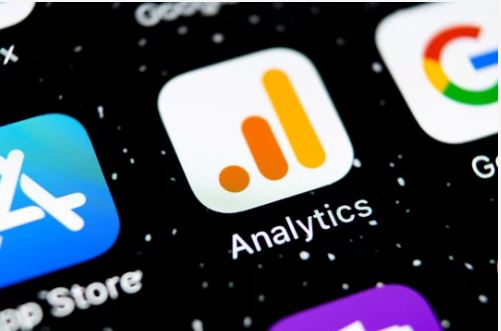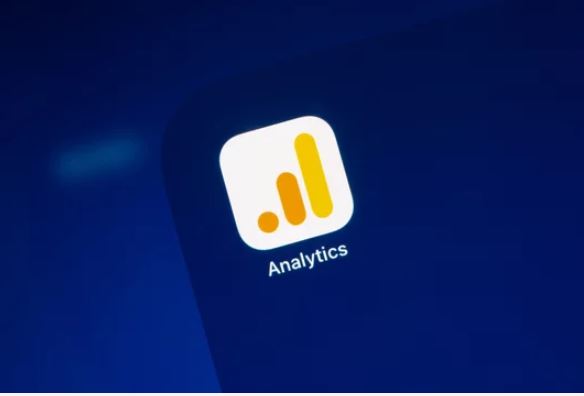Last Updated on
Google Analytics 4 (GA4) is a boon to digital marketers, analysts, and website owners. Its profound features offer significant advantages over its predecessors. One such feature, the Measurement ID, is a linchpin for success in today’s data-driven environment. However, many find it challenging to locate their Measurement ID in GA4. Our guide will simplify this process, leading you directly to your Measurement ID and empowering your analytics efforts.
A Comprehensive Overview: Google Analytics 4 Measurement ID
In Google Analytics 4, the Measurement ID represents a unique identifier for each data stream. It is an essential component that empowers you to link your website, mobile app, or other digital platforms to GA4.
The Measurement ID is not just another alphanumeric code. It serves as a conduit, connecting your digital properties to the GA4 platform and ensuring the smooth transmission of crucial user interaction data.

Finding Your Measurement ID in Google Analytics 4: A Step-by-Step Guide
In the labyrinth of GA4’s user interface, it’s easy to get lost. Fear not; follow our detailed steps, and you will find your Measurement ID in no time.
Step 1: Login and Choose the Right Account
Start by logging into your Google Analytics account. Once there, navigate to the tab that contains the property for which you need the Measurement ID.
Step 2: Select the Correct Property
From the account page, select the appropriate property. The names of your websites, apps, or other digital assets can often distinguish properties.
Step 3: Open ‘Data Streams’
Locate and click the ‘Data Streams’ option on the property page in the left panel. This will lead you to a page listing all data streams associated with the selected property.
Step 4: Choose the Relevant Data Stream
Select the data stream corresponding to your website or app. Upon selection, you will be directed to a detailed page for that specific data stream.
Step 5: Unveil Your Measurement ID
The Measurement ID is at the top of the data stream page, labeled ‘Measurement ID.’ This unique identifier typically begins with ‘G-.’
Using Your Measurement ID Effectively: The Key to Powerful Analytics
Now that you have located your Measurement ID, you’re one step closer to leveraging the full power of Google Analytics 4. Use this ID to link your website or app to GA4, unlocking robust tracking and analysis capabilities.
Mastering Tagging in Google Analytics 4
With your Measurement ID, you can now delve into the tagging world. Implementing tags on your website or app will enable GA4 to track user interactions with a fine-toothed comb.
Conclusion: Harnessing the Power of Google Analytics 4
Locating your Measurement ID in Google Analytics 4 may seem daunting at first. But with our detailed, step-by-step guide, this task becomes a breeze. Remember, your Measurement ID is more than just a unique identifier—it’s your passport to a realm of rich, insightful data analytics. The better you understand and use your Measurement ID, the more potent your analytics efforts will become. Empower your decision-making with data and explore the wonders of Google Analytics 4.
FAQs
What is Google Analytics 4 for?
Google Analytics 4 (GA4) is the latest version of Google Analytics, introduced by Google to provide a more advanced and comprehensive analytics solution for website and app owners. GA4 builds upon the foundation of Universal Analytics (the previous version) but offers several new features and improvements. Here’s what Google Analytics 4 is for:
- Enhanced User-Centric Tracking: GA4 tracks user interactions across various platforms and devices. It uses an event-driven model to capture user actions and provides a more user-centric data view.
- Cross-Platform Tracking: GA4 allows you to track user interactions across websites, mobile apps, and other digital platforms. It offers a unified view of user behavior, helping you understand how users engage with your brand across different channels.
- Machine Learning and AI Integration: GA4 incorporates advanced machine learning and artificial intelligence capabilities. It includes predictive metrics, such as churn probability and purchase probability, which can help you anticipate user behavior and make data-driven decisions.
- Event-Driven Data Model: GA4 relies on events to track user interactions, giving you more flexibility in defining and monitoring custom events relevant to your business goals.
- Deeper Insights with Enhanced Reporting: GA4 provides more detailed and granular reports than Universal Analytics. It offers improved user engagement, acquisition, and behavior analysis, allowing you to gain deeper insights into your audience.
- Better User Privacy and Compliance: GA4 is designed with user privacy in mind. It provides features to assist with data compliance, such as data deletion requests and restricted data processing settings.
- Streamlined Configuration: Setting up GA4 is more straightforward than in previous versions. The streamlined configuration process allows you to start collecting data with minimal effort.
- Data Integration with Google Ads and Google Marketing Platform: GA4 seamlessly integrates with Google Ads and Google Marketing Platform, enabling you to use your GA4 data to optimize your advertising and marketing efforts.
- Future-Proofing: As the latest version of Google Analytics, GA4 will likely receive continued support and updates from Google, ensuring that it stays relevant and up-to-date with evolving analytics needs.
While GA4 introduces many exciting features and improvements, it’s worth noting that Universal Analytics (UA) is still in use and widely adopted by many websites and apps. Universal Analytics and GA4 can coexist, and Google provides resources for data migration from UA to GA4.
If you are setting up a new website or app or want to take advantage of the advanced features offered by GA4, considering its implementation may be beneficial. However, if you are already using Universal Analytics and it meets your current needs, you can continue to use it until you decide to transition to GA4.
When Was GA4 First Launched?
Google launched GA4, also known as Google Analytics 4, on October 14, 2020. It represents the latest iteration of Google’s web and app analytics platform, introducing significant changes and enhancements compared to the previous version, Universal Analytics. Since its release, Google Analytics 4 has been continuously updated and improved to provide a more advanced and user-centric analytics solution for website and app owners.




